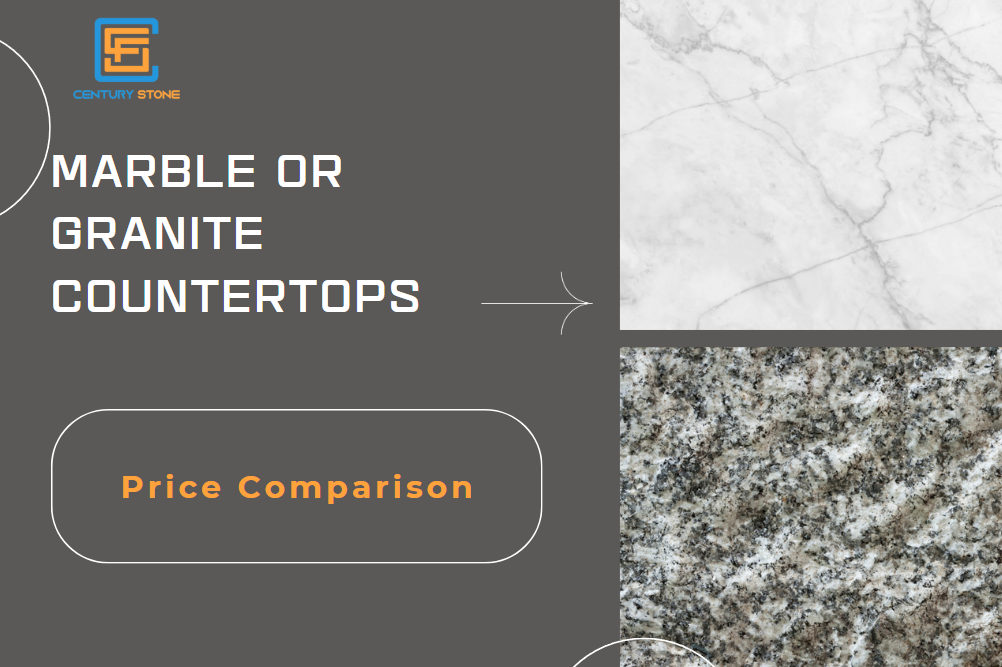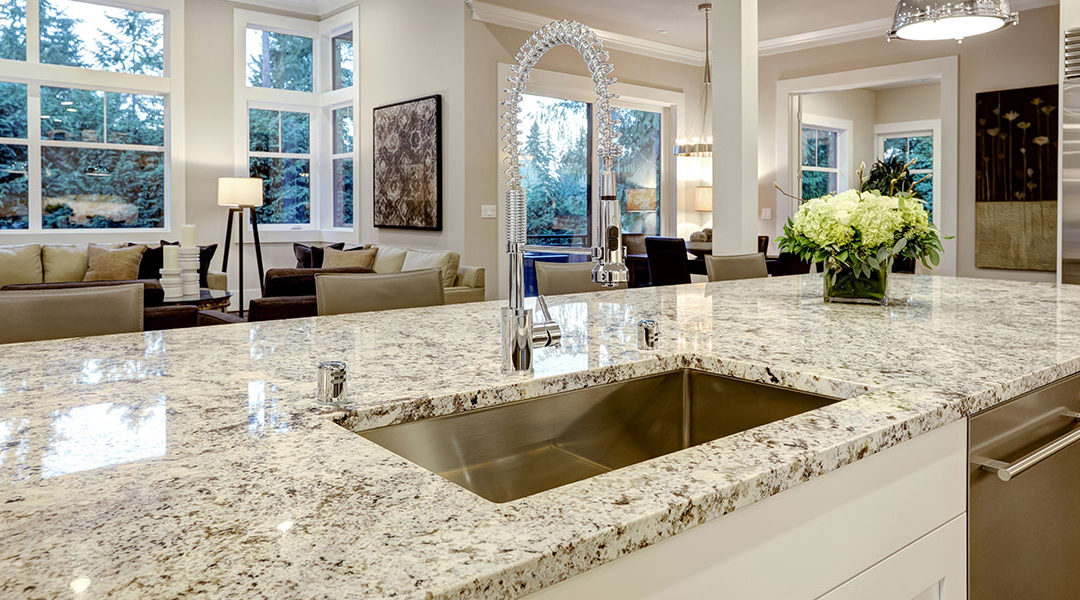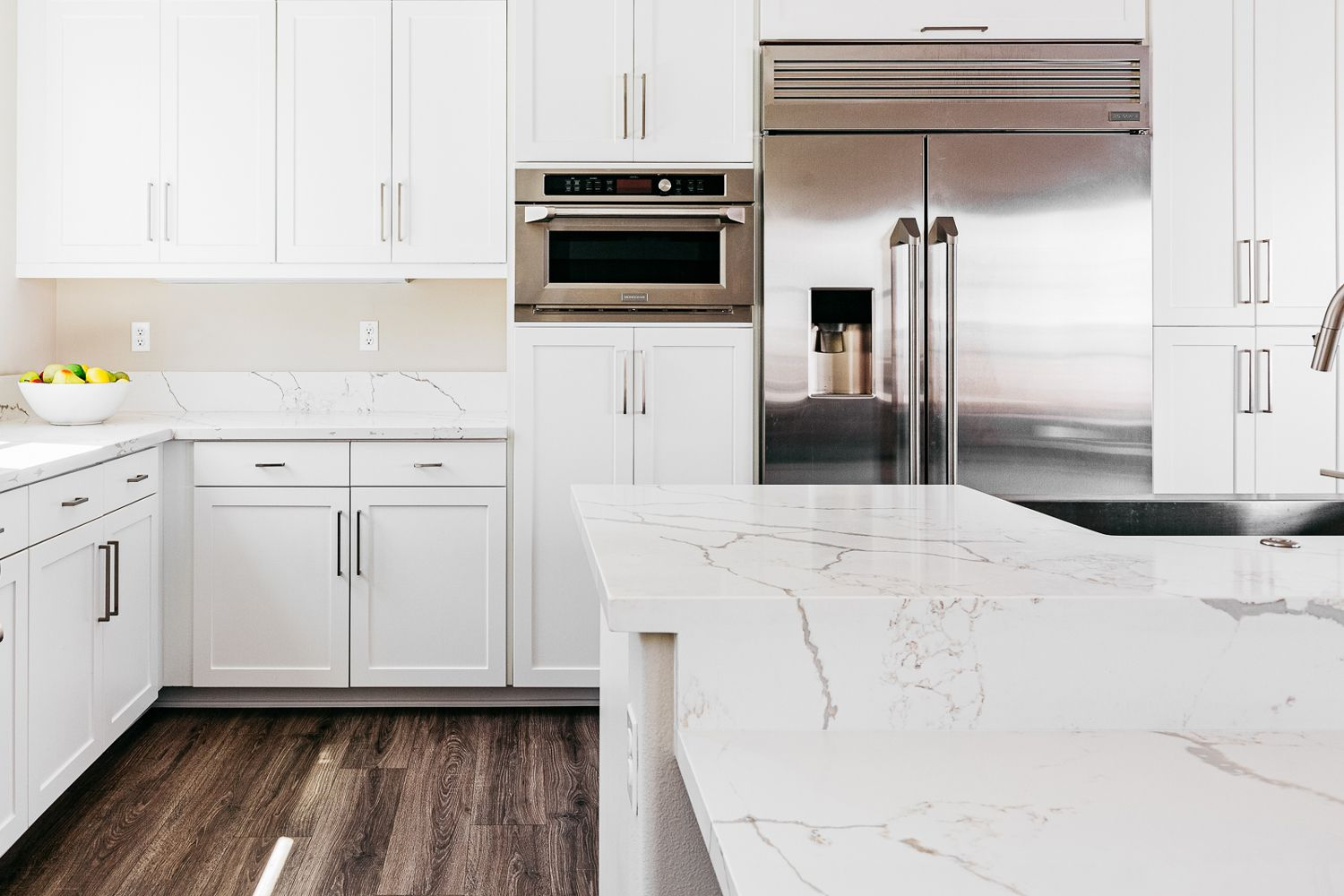Is Marble or Granite More Expensive for Your Countertops?

Is Marble or Granite More Expensive for Your Countertops?
Marble and Granite in Modern Homes
Marble and granite countertops serve as the backbone of any stylish kitchen or bathroom. With natural elegance, they give a centerpiece that invites admiration. Choosing between marble, known for its luxurious and pristine appearance, and granite, celebrated for its robust and textured charm, often boils down to aesthetic preference and lifestyle compatibility. Whichever material you opt for, you can look forward to an uplift in your home's aesthetic and market value.
Breaking Down Factors That Affect Prices
Veins of Value: Attaining a Deep Understanding of Material Quality
When evaluating the material quality of stone countertops, veining becomes a critical touchstone. In marble, veining patterns not only add to the stone's uniqueness but also influence its grade and subsequent valuation. For instance, the pristine, virtually veinless appearance of Grade A marble like Carrara, reflects fewer natural imperfections, offering a sublime, uniform aesthetic. Conversely, more dramatic and richly veined grades such as B or C like Calacatta or Statuario bring with them intricate patterns, with each slab telling a geological story, but may require repairs.

Veins of Value: Attaining a Deep Understanding of Material Quality
For granite, the quality isn't typically sorted by veining but rather by color consistency and the presence of soft minerals, which might affect durability. Veining in granite is less of a structural concern and more an aesthetic preference. Understanding these distinctions is crucial because they significantly impact the price tag—not to mention the longevity and appearance of your countertops.
From Quarry to Kitchen: The Journey of Slab Pricing
The journey from quarry to kitchen affects pricing significantly. Both marble and granite begin their lives deep within the earth, requiring extensive extraction efforts. The scarcity and location of the quarry can escalate raw material costs—with some marbles sourced from exotic locations commanding premium prices. Beyond extraction, refinement processes like cutting and polishing factor in; precision machinery and skilled labor don't come cheaply.
Transportation, too, plays a role in slab pricing. The further your chosen slab needs to travel, the higher the cost. Shipping methods have improved since the 1980s, but distance and fuel prices still add up. Once the slab arrives, the complexity of your design can influence the final price. As you can imagine, a countertop with multiple cutouts or an intricate edge design requires more labor and resources than a standard rectangle. Since granite slab sizes and shapes tend to be more uniform, they often come with a slightly lower price tag compared to marble slabs which might need more customization.
Consider these steps in slab pricing as an investment in quality and craftsmanship that will serve you for years to come.
The True Costs Behind Marble Countertops
Understanding the true costs behind marble countertops means peering beyond the initial price tag. While the allure of marble with its opulent sheen and cool touch is undeniable, it is typically positioned at the higher end of the price spectrum compared to other countertop materials. Factors such as rarity, grade of marble, thickness, and finish will weigh heavily on your budget. Cultured marble, a more affordable engineered stone made from marble dust and resin, offers a cost-conscious alternative without sacrificing the luxurious appeal.
Installation costs can also inflate your expenditure. Since marble is more porous and softer than granite, it necessitates careful handling. Special sealants and methods are required to preserve its beauty and integrity, possibly leading to higher labor costs. Remember to factor in not just the purchase, but also the maintenance; marble requires regular sealing and is prone to etching and staining, potentially leading to more frequent upkeep expenses.
Despite these costs, marble’s ageless beauty and proven boost to property value should be balanced against the long-term enjoyment and aesthetic value it brings to your home.
Understand the Costs Behind Granite Countertops
Granite countertops appeal to many due to their lower cost relative to marble, without compromising on the natural stone experience. The cost of granite is influenced by factors such as color rarity, country of origin, and slab size. For instance, you’ll find that common colors like black or brown are more budget-friendly, while exotic blues and reds come at a premium due to their rarity.

The True Costs Behind Marble Countertops
In terms of installation, granite requires less maintenance over time than marble; it’s naturally more resistant to scratching and staining, which can offset long-term costs. However, like marble, granite also requires periodic sealing to maintain its resilience against damage.
Despite its hearty composition, intricate edging and custom cutouts can drive up installation costs. When considering granite, anticipate the initial investment for the stone and installation as well as the minimal but necessary expenses for occasional sealing. The durability and time-tested popularity of granite often makes it a smart, economical choice for many homes, balancing upfront costs with longevity and ease of maintenance.
Comparing Maintenance - Lifespan and Longevity Costs
When you weigh the longevity and maintenance expenses between marble and granite countertops, granite is often seen as the cost-effective champion. With its resistance to scratches and less frequent need for sealing, granite countertops can often remain in top condition with basic care and periodic professional maintenance, typically only once every two years. This resilience translates into a longer lifespan, ensuring that your investment withstands the test of time and daily use.
Marble, while exuding opulence, demands a higher level of commitment when it comes to maintenance. Being more porous, it is prone to staining and scratching, and requires a diligent sealing routine—generally once a year, depending on the level of usage. Spills of acidic substances like wine or lemon juice must be wiped immediately to prevent etching, and specialized cleaning products are a must to avoid damages that over-the-counter cleaners might cause.
Maintenance costs, understandably, can add up over the years, making granite a potentially more economical choice in the long run. Knowing these factors will help you budget for the initially invisible costs that care and durability incur over the lifespan of your countertops.
Analyzing Installation and Additional Costs
Installation costs for marble and granite countertops are a crucial component to consider when budgeting for your renovation project. These expenses can fluctuate based on several variables such as the complexity of the installation, size and shape of the chosen slabs, edging style, and regional labor rates. For both materials, the need for a plywood substrate in cases of thinner slabs, additional treatments like sealing, and intricate details like fancy edges or cutouts will lead to increased labor and material costs.
Given that labor constitutes a significant portion of the installation costs, being prepared before the installers arrive can save money. Preparatory work, like removing old countertops or disconnecting appliances and plumbing, can reduce the time required for installation and consequently, the overall cost.
Your location can also play a role; installation prices may be higher in urban areas compared to rural ones due to the cost of living and competition among providers. Always get multiple quotes and understand what each quote covers to avoid hidden fees or surprises.
Remember that investing properly in the installation process ensures that your countertops are set correctly and last longer, potentially preventing expensive repairs or replacements down the line.
Money-Saving Tips for Countertop Buyers

Money-Saving Tips for Countertop Buyers
Saving money on your dream countertops without compromising on quality is definitely achievable with a few insider tips:
- Shop Surplus or Remnant Stock: Retailers often have pieces of marble or granite left over from other projects—these remnants can be a real bargain, especially for smaller projects or vanities.
- Consider the Thickness: Opting for a thinner slab can reduce costs. You may also use a plywood backing to reinforce thinner slabs, cutting down on material costs while ensuring durability.
- Simple Edge Designs: Intricate edge designs increase costs due to the labor and craftsmanship required. Simple, clean lines for edges can achieve an elegant look at a lower price.
- DIY Some Tasks: If you’re handy, consider undertaking some aspects of the project, such as demolition or disposal of the old countertops, to save on labor costs.
- Shop Around: Get quotes from multiple suppliers and installers to find the best deal. And don't forget to ask about any ongoing sales or discounts for bulk purchases.
- Timing Your Purchase: Off-season or end-of-year sales can be an optimal time to purchase countertops, as businesses are looking to reduce inventory before new stock arrives.
- Bundle Deals: If you’re undergoing a larger renovation, look for bundle deals on materials and installation. Some companies offer discounts if you purchase countertops alongside cabinets or other services.
Remember, any money you save on the countertops themselves can contribute to enhanced features or cover installation costs, so it pays to hunt for bargains.
FAQs
Which is More Expensive: Marble or Granite?
Generally, marble tends to be more expensive than granite due to its perceived luxury status, veining patterns, and the more involved maintenance routine it requires. Granite, while also a premium countertop material, usually costs less and offers a similar level of natural beauty and durability. It's important to consider that prices can vary widely based on the specific type and quality of the stone you select. [Placeholder for a comparative price chart of common marble and granite options]
Can the Costs Vary Depending on Color and Pattern Choices?
Absolutely, both marble and granite prices can fluctuate depending on color rarity and pattern intricacy. Unique marble colors or striking vein patterns are typically pricier as they are less common and in higher demand. Similarly, granite prices can surge for slabs with uncommon hues or particularly captivating patterns. It's worthwhile balancing the desire for a distinctive look with your budget considerations.
What Should I Consider Beyond Initial Purchase Price for Long-Term Value?
Beyond the initial purchase price, consider durability, maintenance costs, and the potential for your countertops to enhance your property's value. Durable materials that require less maintenance can offer better long-term savings, even if initially more expensive. Also, consider if the aesthetics of your chosen material remain in style and desirable, ensuring a timeless appeal that could positively influence your home’s resale value.
Are There Any Cost-Effective Alternatives to Marble and Granite?
Yes, materials such as quartz, solid surface, and laminate offer cost-effective alternatives to marble and granite. Quartz mimics the look of stone but is engineered to be more durable and maintenance-free. Solid surface materials offer seamless installation and a wide range of colors. Laminate, while not as durable, provides an affordable way to achieve a high-end look. Each of these options serves distinct preferences and budgets while maintaining a stylish appearance.

 en
en
 Vietnamese
Vietnamese
 English
English
 Chinese
Chinese